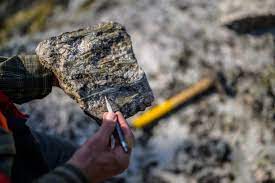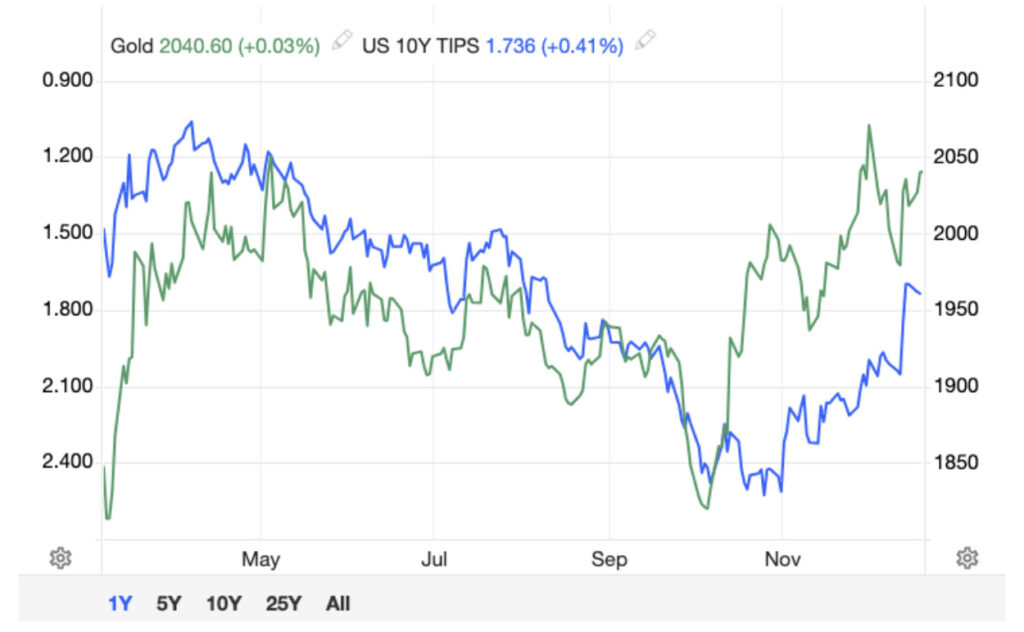Companies
Liberty Gold Announces Updated Resource Estimate for the Black Pine Oxide Gold Deposit, Idaho
2,613,000 Indicated and 483,000 Inferred Oxide Gold Ounces 52% Increase in Indicated and 31% Increase in Inferred Ounces VANCOUVER, British Columbia,…

2,613,000 Indicated and 483,000 Inferred Oxide Gold Ounces
52% Increase in Indicated and 31% Increase in Inferred Ounces
VANCOUVER, British Columbia, Feb. 07, 2023 (GLOBE NEWSWIRE) — Liberty Gold Corp. (TSX: LGD; OTCQX: LGDTF) (“Liberty Gold” or the “Company”) is pleased to announce an update to the independent Mineral Resource Estimate (the “Resource” or “MRE”) at its Black Pine Oxide Gold Project (“Black Pine”) in southeastern Idaho. The updated Resource builds on the maiden resource released on July 13, 20211, and includes an additional 528 Reverse Circulation (“RC”) and core holes (126,726 metres) drilled by Liberty Gold between April 2021 and October 2022.
The MRE has an effective date of January 21, 2023, is reported using a constraining resource pit at a cut-off grade (“COG”) of 0.20 grams per tonne (“g/t”) gold (“Au”) and consists of:
- An indicated resource of 2,613,000 ounces of oxide gold at an average grade of 0.52 g/t Au and totalling 157,267,000 tonnes (“t”); and
- An inferred resource of 483,000 ounces of oxide gold at an average grade of 0.43 g/t Au and totalling 35,150,000 t.
- A high-grade subset of the MRE within the 0.20 g/t Au resource pit using a COG of 0.50 g/t Au consists of:
- An indicated 1,548,000 ounces of gold at an average grade of 1.02 g/t Au and totalling 47,391,000 t; and
- An inferred 219,000 ounces of gold at an average grade of 0.93 g/t Au and totalling 7,315,000 t.
In total, using the same COG as the previous resource estimate, the updated MRE represents a 52% increase in indicated ounces and a 31% increase in inferred ounces over the maiden resource released just 18 months ago (see press release dated July 13, 2021). Within the higher-grade subset (0.50 g/t Au COG within the 0.20 g/t Au resource pit), 528,000 indicated ounces were added relative to the 2021 maiden resource estimate, a 52% increase. The significant increase in ounces can be attributed to:
- The discovery (see press release dated September 1, 2021) and subsequent intensive drilling of 154 holes included in the resource in the Rangefront Zone beginning in July 2021 over a 15 month period.
- Expansion and/or amalgamation of several existing zones, including the CDF, E, and M zones and discovery of the Bobcat Zone, a southern extension of the CDF Zone (see press released dated December 13, 2022).
- Drill testing and drill definition of surficial waste rock storage and pit backfill.
- Definition drilling in previously-defined areas of inferred mineralization.
The MRE was completed by SLR Consulting (Canada) Ltd., Toronto, Canada (“SLR”). SLR is a highly respected engineering company with extensive experience in resource estimation and audit of the largest Carlin-style gold systems in the Great Basin.
Jason Attew, President and CEO of Liberty Gold stated, “This updated Mineral Resource Estimate for our flagship Black Pine project represents a major milestone for Liberty Gold and a major accomplishment for our exploration team, who spent the last year and a half with a singular focus on expanding and upgrading the resource endowment at Black Pine. The team has delivered impressive results. Compared to the July 2021 resource estimate, tonnes are up significantly while grade has improved using conservative input assumptions, positioning Black Pine in the rarified territory of an oxide resource with more than 2.6 million indicated ounces and a further half a million ounces inferred. Moreover, we are encouraged that Black Pine continues to expand in all directions with future resource growth expected as drill results continue to impress.”
For maps and cross sections of the Black Pine Mineral Resource block model, please click here: https://libertygold.ca/images/news/2023/February/BlackPine_ResourceUpdate.pdf
TABLE 1: BLACK PINE UPDATED MINERAL RESOURCE ESTIMATE
| Zone | Classification | Tonnes | g/t Au | oz Au | % Indicated % Inferred |
% Total Resource |
| Discovery Zone | Indicated | 86,275,000 | 0.54 | 1,498,000 | 93 | 52 |
| Inferred | 8,283,000 | 0.40 | 107,000 | 7 | ||
| Rangefront Zone | Indicated | 46,581,000 | 0.49 | 732,000 | 86 | 27 |
| Inferred | 7,913,000 | 0.46 | 118,000 | 14 | ||
| CDF Zone | Indicated | 13,649,000 | 0.40 | 173,000 | 66 | 8 |
| Inferred | 7,260,000 | 0.39 | 90,000 | 34 | ||
| M Zone | Indicated | 5,255,000 | 0.71 | 120,000 | 92 | 4 |
| Inferred | 762,000 | 0.45 | 11,000 | 8 | ||
| Back Range Zone | Indicated | 1,584,000 | 0.62 | 32,000 | 29 | 4 |
| Inferred | 3,783,000 | 0.63 | 77,000 | 71 | ||
| E Zone | Indicated | 2,614,000 | 0.43 | 36,000 | 49 | 2 |
| Inferred | 3,529,000 | 0.32 | 37,000 | 51 | ||
| J Zone | Indicated | 1,310,000 | 0.50 | 21,000 | 32 | 2 |
| Inferred | 3,619,000 | 0.38 | 44,000 | 68 | ||
| Total Resource | Indicated | 157,267,000 | 0.52 | 2,613,000 | 84 | 84 |
| Inferred | 35,150,000 | 0.43 | 483,000 | 16 | 16 | |
Notes:
|
||||||
KEY POINTS
- The updated MRE captures historic shallow drilling and Liberty Gold drilling through mid-October 2022 throughout the 14 square kilometer (“km2”) surface gold anomaly surrounding the historic pits and in the Rangefront area, leaving large areas of the project still untested.
- A combination of historic drilling and Liberty Gold drilling comprised of 2,398 tightly spaced drill holes and representing 362,423 m of drilling, allows for a high degree of confidence in the integrity of the MRE, as illustrated by 84.4% of the MRE in the indicated category.
- Within the 0.20 g/t Au resource pit shell, there is a subset of higher-grade mineralization exceeding 1.5 million ounces of indicated material at a grade of over 1 g/t Au (0.50 g/t Au cut-off grade).
- An analysis of geological potential at lower cut-off grades, down to the marginal cut-off grade of 0.10 g/t Au, suggests that significant upside potential exists for recovery of additional ounces in a future mine at Black Pine by applying operational cut-off grades similar to other run-of-mine oxide heap-leach operations in the Great Basin. These lower grade ounces are estimated in the block model to a high degree of confidence and have supporting metallurgical test work.
- Inferred portions of the MRE largely reflect areas of recent resource expansion drilling and will continue to be upgraded through infill drilling.
- The updated MRE is supported by four phases of metallurgical column testing, completed between 2019 and 2021. Three additional phases of metallurgical test work are currently in progress for Black Pine. Results will be released when available from February through December 2023.
- As of December 31, 2022, Liberty Gold has expended approximately US$48.7 million dollars all-in on the project, including acquisition costs, or approximately US$16 per resource ounce of gold.
“The updated MRE represents the next step in validating our hypothesis that the Black Pine gold system may be the largest oxide gold system in the Great Basin not currently being mined,” stated Moira Smith, Liberty Gold’s Corporate Technical Advisor. “Our initial concept of a gold system hosted along low-angle, bedding-parallel faults over a wide area has withstood the test of time, and we were able to test the concept in an area of shallow cover to the east of the main zone of mineralization, resulting in a major discovery at Rangefront. With over 40 holes pending assay results post-resource at this time, we are well on our way toward further resource growth. At this point, with data in hand from this resource update, both within and outside of the current resource pit, we believe that geological potential across our two Great Basin properties could extend to at least 7 million ounces.”
RESOURCE DISTRIBUTION ACROSS AND WITHIN THE BLACK PINE DEPOSIT
With reference to Table 1, above, the updated MRE reflects efforts to grow the deposit through:
- Testing of new targets: The Rangefront Zone, targeted by drilling starting in July 2021, has added over 679,000 ounces of indicated and 93,000 ounces of inferred resource to the Black Pine deposit relative to the 2021 resource estimate, and now contributes 27% to the total Resource. It is located adjacent to flat terrain suitable for future infrastructure development.
- Targeting of areas with potential to yield near-surface mineralization at higher than average grades including the M Zone and F Zone. The M Zone now hosts 120,000 indicated ounces at an average grade of 0.71 g/t Au.
- Targeting of sparsely-drilled, smaller zones with multiple small resource pits in order to amalgamate them into larger bodies of contiguous mineralization in fewer pits, including the M Zone, portions of the CDF Zone and Back Range Zone.
- Step-out drilling along the margins of existing zones, including the CDF, E and Rangefront zones.
- Drill testing of surficial mine disturbance, including waste rock storage and pit backfill, to identify and drill off areas of above cut-off grade material.
- Drill testing of new areas including the newly-defined Bobcat Zone (reported as part of the CDF Zone).
The Discovery Zone continues to host the largest contiguous body of gold mineralization at Black Pine, with the Rangefront Zone now the second largest. The Rangefront Zone is open to the west, north and east, with drilling continuing to expand its limits.
RESOURCE ESTIMATE ANALYSIS BY BLOCK GRADES
The average grade of the deposit within the limits of the 0.20 g/t Au resource pit shell reflects a wide range of block grades. At successively higher cut-off grades, a sizeable portion of the deposit remains (Table 2). At a block COG of 0.50 g/t Au, an indicated 1,548,000 ounces at an average grade of 1.02 g/t Au remain. The distribution of the above 0.50 g/t Au COG blocks is shown in the graphics provided at the link above.
TABLE 2: RESOURCE GRADE DISTRIBUTION AT SUCCESSIVELY HIGHER CUT-OFF GRADES WITHIN THE 0.2 G/T AU REPORTING PIT*
| Block cut-off grade | Classification | Tonnes x 1000 | Au g/t | Au Ounces x 1000 | ||
| 0.20 g/t | Indicated | 157,267 | 0.52 | 2,613 | ||
| Inferred | 35,150 | 0.43 | 483 | |||
| 0.25 g/t | Indicated | 118,475 | 0.61 | 2,334 | ||
| Inferred | 24,799 | 0.51 | 408 | |||
| 0.30 g/t | Indicated | 93,679 | 0.70 | 2,117 | ||
| Inferred | 18,129 | 0.60 | 350 | |||
| 0.50 g/t | Indicated | 47,391 | 1.02 | 1,548 | ||
| Inferred | 7,315 | 0.93 | 219 | |||
| *Please refer to the notes accompanying Table 1, above, for additional information. The Black Pine updated MRE is shown in bold and italic font. | ||||||
POTENTIAL UPSIDE
Potential upside was examined by evaluating the block model down to successively lower cut-off grades with corresponding constraining resource pits, approaching the marginal COG.
Considerable upside remains for resource expansion at lower COGs, to be investigated in the course of carrying out future engineering studies.
TABLE 3: SENSITIVITY ANALYSIS USING LOWER CUT-OFF GRADES*
| Cut-off (g/t Au) | Category | Tonnes | g/t Au | Ounces Au | ||
| 0.10 | Indicated | 311,571,000 | 0.34 | 3,412,000 | ||
| Inferred | 97,244,000 | 0.27 | 850,000 | |||
| 0.15 | Indicated | 230,709,000 | 0.41 | 3,056,000 | ||
| Inferred | 66,042,000 | 0.33 | 702,000 | |||
| 0.17 | Indicated | 197,518,000 | 0.45 | 2,875,000 | ||
| Inferred | 50,260,000 | 0.37 | 599,000 | |||
| 0.20 | Indicated | 157,267,000 | 0.52 | 2,613,000 | ||
| Inferred | 35,150,000 | 0.43 | 483,000 | |||
| *Please refer to notes accompanying Table 1, above. The reporting MRE is shown in bold and italic font. Tonnes, grade and ounces are expressed within a series of nested pit shells generated at USD$1800/ounce gold whereby only the material above each cut-off grade is processed. | ||||||
In addition to the above, the block model contains a large number of unclassified blocks lying outside of the limits of the 0.10 g/t Au pit shell. It is unknown if further drilling will result in classification of these blocks as resource. However, the presence of gold mineralization beyond the pit limits suggests the potential for future additions of gold to the current MRE.
Non-oxide gold mineralization, primarily in the form of carbonaceous material with very low cyanide solubility, is present at the base of the deposit in several locations, as well as sporadically elsewhere in the stratigraphic column. This material was assigned a zero recovery in the conceptual pit model, such that it is excluded from the pits, and, if internal to the pits, is not included in the MRE. Very high grades were encountered locally in this material. It is not known whether some or all of this material is recoverable using other methods without further metallurgical studies.
2023 WORK PROGRAM
Much of the gold system at Black Pine remains unexplored or incompletely tested, including areas along the southeastern, eastern and northeastern edge of the deposit, as well as the gap between the Back Range and E zones.
A recently submitted modification to the United States Forest Service (“USFS”) Plan of Operations, as well as a recently received Bureau of Land Management Plan of Operations will allow access to much of this area beginning in 2023.
The 2023 drill program commenced on January 7, 2023, in low elevation areas along the eastern margin of the deposit. The budget includes 32,000 m of RC drilling targeting resource upgrade and expansion over several areas of the deposit, as well as reconnaissance drilling in new areas along the eastern margin of the deposit.
In parallel with the drill program, development work is continuing, comprising:
- Phase 5 metallurgical column test work (55 columns).
- Submission of an additional modification to the USFS Plan of Operations.
- Geotechnical and hydrological studies.
- Waste rock geochemical studies.
- Environmental baseline work.
ABOUT BLACK PINE
Black Pine is located in the northern Great Basin, immediately adjacent to the Utah/Idaho border. It is a Carlin-style gold system, similar in many ways to the prolific deposits located along Nevada’s Carlin trend. Like Nevada Gold Mine’s Long Canyon deposit, Black Pine represents a growing number of Carlin-style gold systems located off the main Carlin and Cortez trends in underexplored parts of the Great Basin. The historic Black Pine Mine operated from 1992 to 1997, during a period of historically low gold prices, with 435,000 ounces of gold produced from five composite, shallow pits, at an average grade of 0.63 g/t Au.
Gold mineralization at Black Pine is hosted in a 100 to 500 m-thick package of receptive, faulted carbonate rocks of the Pennsylvanian Oquirrh Formation. The rocks show evidence of extensive decalcification and clay alteration typical of Carlin-style gold deposits and are strongly oxidized over the entire extent of the 14 km2, exposed portion of the gold system.
Metallurgical column test results received to date indicate rapid gold recoveries, relatively insensitive to crush size, which support a simple, low-cost heap-leach process.
A virtual site tour and 3D model of Black Pine property, including details about the geology and mineralization, will be available in due course on the Company’s website: libertygold.ca.
ESTIMATION METHODS
The resource estimate was completed by Ryan Rodney, C.P.G., Senior Resource Geologist, of SLR. Mr. Rodney is an Independent Qualified Person as defined by National Instrument 43-101 Standards of Disclosure for Mineral Projects (“NI 43-101”). The resource estimate was prepared in accordance with the Canadian Institute of Mining, Metallurgy and Petroleum (“CIM”) Standards on Mineral Resources and Mineral Reserves, adopted by the CIM Council, as amended. Estimation methods are summarized below.
- The gold mineral resources at the Black Pine Project were modeled and estimated by:
- Developing a geological model, in Leapfrog Geo reflecting low-angle fault control and stratigraphic control of mineralization hosted in receptive carbonate host rocks;
- evaluating the drill data statistically;
- interpreting low (0.1 g/t Au) and high-grade (0.3 g/t Au for Rangefront and 0.5 g/t Au for all other areas) gold-domains using Leapfrog Edge;
- compositing data to 3.048 metres (10 feet) within the gold domains;
- coding a block model comprised of 10 x 10 x 5 (x, y, z) metre blocks and sub-blocked to 2.5 x 2.5 x 1.25 metre blocks to the domains;
- analyzing the modeled mineralization geostatistically to aid in the establishment of estimation and classification parameters;
- interpolating gold grades using inverse distance cubed (ID3) and a three pass interpolation strategy into the model blocks using the mineral domain coding to explicitly constrain the gold grade estimations; and
- evaluating, statistically and visually, the resulting model in detail prior to finalizing the mineral resource estimation.
- The Black Pine Deposit mineral resource has been constrained by optimized pit shells created using a gold price of US$1,800/ounce and pit slopes ranging from 45 to 47 degrees in eight sectors defined by geotechnical studies. Additional inputs for the pit-optimizations include: Mining – $2.35/tonne mined, heap leaching – $2.00/tonne processed; and G&A cost of $0.80/tonne processed at an assumed 10 million tonnes per year processing rate. Gold recoveries are based on equations derived from metallurgical data and vary by grade and rock unit. A 0.5% net smelter return royalty was also applied.
- The drilling database for the project contains 1,854 historical RC holes and 23 diamond core holes, as well as 768 RC and 30 core holes drilled by Liberty Gold. The historical holes at the Black Pine Project were primarily drilled from the mid 1980s to the late 1990s by Noranda and Pegasus Gold.
- A technical report on the updated resource estimate will be prepared in accordance with NI 43-101 and filed within 45 days of this news release on Liberty Gold’s issuer profile on SEDAR at www.sedar.com
The technical information contained in this news release has been reviewed and approved by Mr. Ryan Rodney, C.P.G. of SLR, an Independent Qualified Person as defined by NI 43-101. Mr. Rodney has verified the data disclosed, including sampling, analytical, and test data underlying the drill results, and he consents to the inclusion in this release of said data in the form and context in which it appears. Mr. Rodney experienced no limitations with respect to data verification activities related to the Black Pine project.
Moira Smith, Ph.D., P.Geo., Corporate Technical Advisor to Liberty Gold, is the Company’s designated Qualified Person for this news release within the meaning of NI 43-101 and has reviewed and validated that the information contained in the release is accurate.
ABOUT LIBERTY GOLD
Liberty Gold is focused on exploring for and developing open pit oxide deposits in the Great Basin of the United States, home to large-scale gold projects that are ideal for open-pit mining. This region is one of the most prolific gold-producing regions in the world and stretches across Nevada and into Idaho and Utah. We know the Great Basin and are driven to discover and advance big gold deposits that can be mined profitably in open-pit scenarios.
For more information, visit libertygold.ca or contact:
Susie Bell, Manager, Investor Relations
Phone: 604-632-4677 or Toll Free 1-877-632-4677
[email protected]
QUALITY ASSURANCE – QUALITY CONTROL
Drill composites were calculated using a cut-off of 0.10 g/t Au. Drill intersections are reported as drilled thicknesses. True widths of the mineralized intervals vary between 30% and 100% of the reported lengths due to varying drill hole orientations but are typically in the range of 50% to 90% of true width. Drill samples were assayed by ALS Limited in Reno, Nevada for gold by Fire Assay of a 30 gram (1 assay ton) charge with an AA finish, or if over 5.0 g/t Au were re-assayed and completed with a gravimetric finish. For these samples, the gravimetric data were utilized in calculating gold intersections. For any samples assaying over 0.10 parts per million an additional cyanide leach analysis is done where the sample is treated with a 0.25% NaCN solution and rolled for an hour. An aliquot of the final leach solution is then centrifuged and analyzed by Atomic Absorption Spectroscopy. QA/QC for all drill samples consists of the insertion and continual monitoring of numerous standards and blanks into the sample stream, and the collection of duplicate samples at random intervals within each batch. Selected holes are also analyzed for a 51 multi-element geochemical suite by ICP-MS. ALS Geochemistry-Reno is ISO 17025:2005 Accredited, with the Elko and Twin Falls prep lab listed on the scope of accreditation.
All statements in this press release, other than statements of historical fact, are “forward-looking information” with respect to Liberty Gold within the meaning of applicable securities laws, including statements that address potential quantity and/or grade of minerals, the potential size of the mineralized zone, the proposed timing of exploration and development plans, the expansion and future resource growth expected at Black Pine, expected capital costs at Black Pine, expected gold recoveries from the Black Pine mineralized material, the potential upgrade of inferred mineral resources to measured and indicated mineral resources, the potential for future additions to the current mineral resource estimate, the 2023 work program and the results thereof, the timing and results of any resource updates and the planned development work at Black Pine. Forward-looking information is often, but not always, identified by the use of words such as “seek”, “anticipate”, “plan”, “continue”, “planned”, “expect”, “project”, “predict”, “potential”, “targeting”, “intends”, “believe”, “potential”, and similar expressions, or describes a “goal”, or variation of such words and phrases or state that certain actions, events or results “may”, “should”, “could”, “would”, “might” or “will” be taken, occur or be achieved. Forward-looking information is not a guarantee of future performance and is based upon a number of estimates and assumptions of management at the date the statements are made including, among others, assumptions about future prices of gold, and other metal prices, currency exchange rates and interest rates, favourable operating conditions, political stability, obtaining governmental approvals and financing on time, obtaining renewals for existing licenses and permits and obtaining required licenses and permits, labour stability, stability in market conditions, availability of equipment, the availability of drill rigs, successful resolution of disputes and anticipated costs and expenditures. Many assumptions are based on factors and events that are not within the control of Liberty Gold and there is no assurance they will prove to be correct.
Such forward-looking information, involves known and unknown risks, which may cause the actual results to be materially different from any future results expressed or implied by such forward-looking information, including, risks related to the interpretation of results and/or the reliance on technical information provided by third parties as related to the Company’s mineral property interests; changes in project parameters as plans continue to be refined; current economic conditions; future prices of commodities; possible variations in grade or recovery rates; the costs and timing of the development of new deposits; failure of equipment or processes to operate as anticipated; the failure of contracted parties to perform; the timing and success of exploration activities generally; the timing of the publication of any updated resources; delays in permitting; possible claims against the Company; labour disputes and other risks of the mining industry; delays in obtaining governmental approvals, financing or in the completion of exploration as well as those factors discussed in the Annual Information Form of the Company dated March 25, 2022 in the section entitled “Risk Factors”, under Liberty Gold’s SEDAR profile at www.sedar.com.
Although Liberty Gold has attempted to identify important factors that could cause actual actions, events or results to differ materially from those described in forward-looking information, there may be other factors that cause actions, events or results not to be as anticipated, estimated or intended. There can be no assurance that such information will prove to be accurate as actual results and future events could differ materially from those anticipated in such statements. Liberty Gold disclaims any intention or obligation to update or revise any forward-looking information, whether as a result of new information, future events or otherwise.
Cautionary Note for United States Investors
The information in this news release, including any information incorporated by reference, and disclosure documents of Liberty Gold that are filed with Canadian securities regulatory authorities concerning mineral properties have been prepared in accordance with the requirements of securities laws in effect in Canada, which differ from the requirements of United States securities laws.
Without limiting the foregoing, these documents use the terms “measured resources”, “indicated resources”, “inferred resources” and “probable mineral reserves”. Shareholders in the United States are advised that, while such terms are defined in and required by Canadian securities laws, the United States Securities and Exchange Commission (the “SEC”) does not recognize them. Under United States standards, mineralization may not be classified as a reserve unless the determination has been made that the mineralization could be economically and legally produced or extracted at the time the reserve determination is made. United States investors are cautioned not to assume that all or any part of measured or indicated resources will ever be converted into reserves. Further, inferred resources have a great amount of uncertainty as to their existence and as to whether they can be mined legally or economically. It cannot be assumed that all or any part of the inferred resources will ever be upgraded to a higher resource category. Under Canadian rules, estimates of inferred mineral resources may not form the basis of feasibility, pre-feasibility or other technical reports or studies, except in rare cases. Therefore, United States investors are also cautioned not to assume that all or any part of the inferred resources exist, or that they can be mined legally or economically. Disclosure of contained ounces is permitted disclosure under Canadian regulations; however, the SEC normally only permits issuers to report resources as in place tonnage and grade without reference to unit measures. Accordingly, information concerning descriptions of mineralization and resources contained in these documents may not be comparable to information made public by United States companies subject to the reporting and disclosure requirements of the SEC.
____________________________________
1 Included in the Updated Technical Report and Resource Estimate for the Black Pine Gold Project, Cassia County, Idaho, USA dated August 18, 2021 with an effective date of June 20, 2021.
drill results
drilling
drill program
drill hole
tsx-lgd
liberty-gold-corp
liberty gold corp
financing
acquisition
press-release

Dolly Varden consolidates Big Bulk copper-gold porphyry by acquiring southern-portion claims – Richard Mills
2023.12.22
Dolly Varden Silver’s (TSXV:DV, OTCQX:DOLLF) stock price shot up 16 cents for a gain of 20% Thursday, after announcing a consolidation of…
GoldTalks: Going big on ASX-listed gold stocks
Aussie investors are spoiled for choice when it comes to listed goldies, says Kyle Rodda. Here are 3 blue chips … Read More
The post GoldTalks: Going…
Gold Digger: ‘Assured growth’ – central bank buying spree set to drive gold higher in 2024
Central banks will drive the price of gold higher in 2024, believe various analysts Spot gold prices seem stable to … Read More
The post Gold Digger:…

















